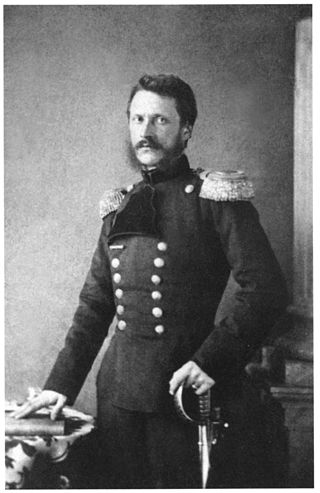
Alexandru Ioan Cuza was the first domnitor (Ruler) of the Romanian Principalities through his double election as prince of Moldavia on 5 January 1859 and prince of Wallachia on 24 January 1859, which resulted in the unification of the two states. He was a prominent figure of the Revolution of 1848 in Moldavia. Following his double election, he initiated a series of reforms that contributed to the modernization of Romanian society and of state structures.

Moldavia is a historical region and former principality in Central and Eastern Europe, corresponding to the territory between the Eastern Carpathians and the Dniester River. An initially independent and later autonomous state, it existed from the 14th century to 1859, when it united with Wallachia as the basis of the modern Romanian state; at various times, Moldavia included the regions of Bessarabia, all of Bukovina and Hertsa. The region of Pokuttya was also part of it for a period of time.

Mircea the Elder was the Voivode of Wallachia from 1386 until his death in 1418. He was the son of Radu I of Wallachia and brother of Dan I of Wallachia, after whose death he inherited the throne.

The Romanians are a Romance-speaking ethnic group. Sharing a common Romanian culture and ancestry, and speaking the Romanian language, they live primarily in Romania and Moldova. The 2021 Romanian census found that just under 89.3% of Romania's citizens identified themselves as ethnic Romanians.

The Romanian Orthodox Church, or Patriarchate of Romania, is an autocephalous Eastern Orthodox church in full communion with other Eastern Orthodox Christian churches, and one of the nine patriarchates in the Eastern Orthodox Church. Since 1925, the church's Primate bears the title of Patriarch. Its jurisdiction covers the territories of Romania and Moldova, with additional dioceses for Romanians living in nearby Serbia and Hungary, as well as for diaspora communities in Central and Western Europe, North America and Oceania. It is the only autocephalous church within Eastern Orthodoxy to have a Romance language for liturgical use.

Mihail Kogălniceanu was a Romanian liberal statesman, lawyer, historian and publicist; he became Prime Minister of Romania on October 11, 1863, after the 1859 union of the Danubian Principalities under Domnitor Alexandru Ioan Cuza, and later served as Foreign Minister under Carol I. He was several times Interior Minister under Cuza and Carol. A polymath, Kogălniceanu was one of the most influential Romanian intellectuals of his generation. Siding with the moderate liberal current for most of his lifetime, he began his political career as a collaborator of Prince Mihail Sturdza, while serving as head of the Iași Theater and issuing several publications together with the poet Vasile Alecsandri and the activist Ion Ghica. After editing the highly influential magazine Dacia Literară and serving as a professor at Academia Mihăileană, Kogălniceanu came into conflict with the authorities over his Romantic nationalist inaugural speech of 1843. He was the ideologue of the abortive 1848 Moldavian revolution, authoring its main document, Dorințele partidei naționale din Moldova.

Alexandru C. Cuza, also known as A. C. Cuza, was a Romanian far-right politician and economist.
The Early Modern Times in Romania started after the death of Michael the Brave, who ruled in a personal union, Wallachia, Transylvania, and Moldavia – three principalities in the lands that now form Romania – for three months, in 1600. The three principalities were subjected to the Ottoman Empire, and paid a yearly tribute to the Ottoman Sultans, but they preserved their internal autonomy. In contrast, Dobruja and the Banat were fully incorporated into the Ottoman Empire.
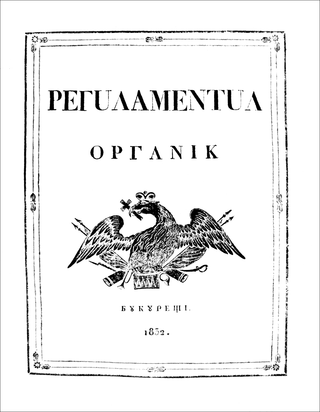
Regulamentul Organic was a quasi-constitutional organic law enforced in 1831–1832 by the Imperial Russian authorities in Moldavia and Wallachia. The document partially confirmed the traditional government and set up a common Russian protectorate which lasted until 1854. The Regulamentul itself remained in force until 1858. Conservative in its scope, it also engendered a period of unprecedented reforms which provided a setting for the Westernization of the local society. The Regulamentul offered the two Principalities their first common system of government.
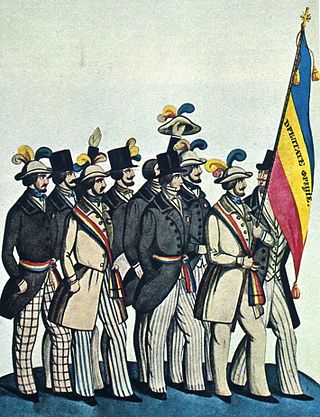
The Wallachian Revolution of 1848 was a Romanian liberal and nationalist uprising in the Principality of Wallachia. Part of the Revolutions of 1848, and closely connected with the unsuccessful revolt in the Principality of Moldavia, it sought to overturn the administration imposed by Imperial Russian authorities under the Regulamentul Organic regime, and, through many of its leaders, demanded the abolition of boyar privilege. Led by a group of young intellectuals and officers in the Wallachian Militia, the movement succeeded in toppling the ruling Prince Gheorghe Bibescu, whom it replaced with a Provisional Government and a Regency, and in passing a series of major progressive reforms, announced in the Proclamation of Islaz.
The union of Bessarabia with Romania was proclaimed on April 9 [O.S. March 27] 1918 by Sfatul Țării, the legislative body of the Moldavian Democratic Republic. This state had the same borders of the region of Bessarabia, which was annexed by the Russian Empire following the Treaty of Bucharest of 1812 and organized first as an Oblast and later as a Governorate. Under Russian rule, many of the native Tatars were expelled from parts of Bessarabia and replaced with Moldavians, Wallachians, Bulgarians, Ukrainians, Greeks, Russians, Lipovans, Cossacks, Gagauzes and other peoples, although colonization was not limited to formerly Tatar-inhabited lands. Russia also tried to integrate the region by imposing the Russian language in administration and restricting education in other languages.

The Bessarabia Governorate was a province (guberniya) of the Russian Empire, with its administrative centre in Kishinev. It consisted of an area of 45,632.42 square kilometres (17,618.78 sq mi) and a population of 1,935,412 inhabitants. The Bessarabia Governorate bordered the Podolia Governorate to the north, the Kherson Governorate to the east, the Black Sea to the south, Romania to the west, and Austria to the northwest. It roughly corresponds to what is now most of Moldova and some parts of Chernivtsi and Odesa Oblasts of Ukraine.

Slavery existed on the territory of present-day Romania from the founding of the principalities of Wallachia and Moldavia in 13th–14th century, until it was abolished in stages during the 1840s and 1850s before the Romanian War of Independence and the formation of the United Principalities of Moldavia and Wallachia in 1859, and also until 1783 in Transylvania and Bukovina. Most of the slaves were of Romani ethnicity. Particularly in Moldavia there were also slaves of Tatar ethnicity, probably prisoners captured from the wars with the Nogai and Crimean Tatars.

In AD 1453, the city of Constantinople, the capital and last stronghold of the Byzantine Empire, fell to the Ottoman Empire. By this time Egypt had been under Muslim control for some seven centuries. Jerusalem had been conquered by the Rashidun Caliphate Muslims in 638, won back by Rome in 1099 under the First Crusade and then reconquered by Saladin's forces during the siege of Jerusalem in 1187. Later in the seventh Crusade, it was taken back by the Catholics once again. It was conquered by the Ottomans in 1517. Orthodoxy, however, was very strong in Russia which had recently acquired an autocephalous status; and thus Moscow called itself the Third Rome, as the cultural heir of Constantinople. Under Ottoman rule, the Greek Orthodox Church acquired power as an autonomous millet. The ecumenical patriarch was the religious and administrative ruler of the entire "Greek Orthodox nation", which encompassed all the Eastern Orthodox subjects of the Empire.
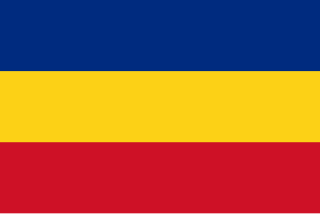
The United Principalities of Moldavia and Wallachia, commonly called United Principalities or as Wallachia and Moldavia, was the personal union of the Principality of Moldavia and the Principality of Wallachia, formed on 5 February [O.S. 24 January] 1859 when Alexandru Ioan Cuza was elected as the Domnitor of both principalities, which were autonomous but still vassals of the Ottoman Empire and which resulted in the unification of both principalities. On 3 February [O.S. 22 January] 1862, Moldavia and Wallachia formally united to create the Romanian United Principalities, the core of the Romanian nation state.

Rūm millet, or "Roman nation", was the name of the Eastern Orthodox Christian community in the Ottoman Empire. Despite being subordinated within the Ottoman political system, the community maintained a certain internal autonomy.
Secularization is the confiscation of church property by a government, such as in the suppression of monasteries. The term is often used to specifically refer to such confiscations during the French Revolution and the First French Empire in the sense of seizing churches and converting their property to state ownership.

The Kingdom of Greece was established in 1832 and was the successor state to the First Hellenic Republic. It was internationally recognised by the Treaty of Constantinople, where Greece also secured its full independence from the Ottoman Empire after nearly four centuries.
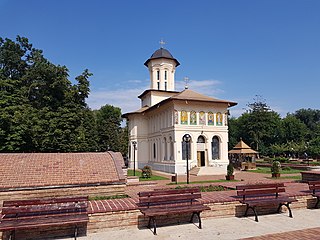
The Nativity of St. John the Baptist Church is a Romanian Orthodox church located at 5 Piața Unirii in Focșani, Romania. It is dedicated to the Nativity of Saint John the Baptist.

The election to the Romanian throne in 1866 followed the deposition of Prince Alexandre Ioan Cuza, with the aim of giving the united principalities of Moldavia and Wallachia a new ruler.

















